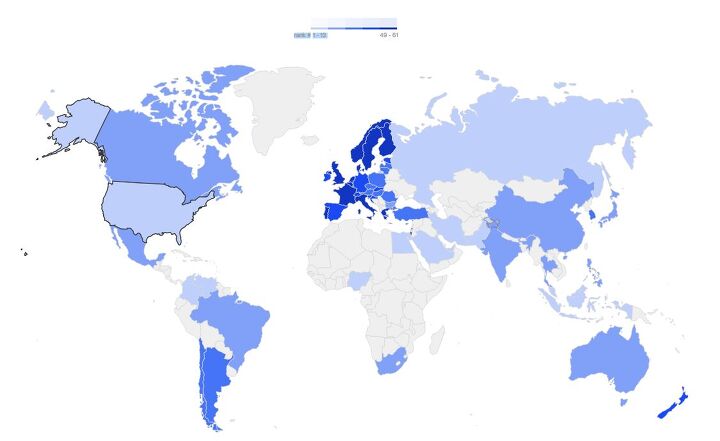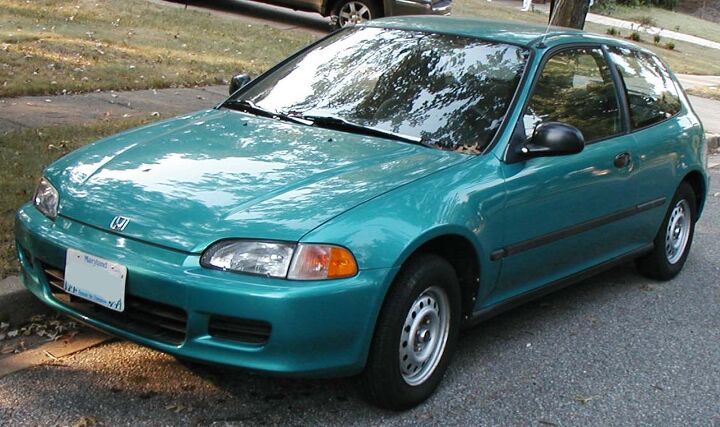#Statistics
Higher Risk: Study Claims States That Legalized Marijuana Have More Traffic Accidents
The Insurance Institute for Highway Safety and the Highway Loss Data Institute announced Thursday that auto crashes in states with legalized recreational marijuana have increased 6 percent. Both groups will be on hand at the Combating Alcohol-and Drug-Impaired Driving summit at IIHS’ Vehicle Research Center in Ruckersville, Virginia to present two studies on the issue. Perfect timing, considering Canada just became the second country to legalize the substance and support for decriminalization continues to grow in the United States.
Of course, things are rarely so simple. While the IIHS and HLDI remain confident in their research, the National Highway Traffic Safety Administration claimed marijuana use was unlikely to contribute to traffic mishaps in any meaningful way back in 2015. And that’s just for starters. There is so much conflicting information on this issue, it’ll make your head spin harder than the most savage bong rip of your life, bro.
Global Gas Prices: Where Do We Fit?
You’ve no doubt noticed that gas prices have been creeping up while 2018 progresses. But North America still has it pretty good, especially the United States. Despite fuel prices creeping up to almost $3.00 per gallon, the U.S. still enjoys cheaper gasoline than most of the Western world. Even Canada, which is currently coasting around $4.45 per gallon, manages to undercut the nightmare that is Europe by a wide margin.
North America as a whole spends more on gas per person then practically everywhere else on the globe, though. An affinity for larger vehicles, combined with more time spent behind the wheel, translates into burning more fuel overall. I suppose one could make the argument that we need cheaper petroleum since we use so much of it — just be ready to have someone call you selfish.
For example, the United Kingdom has prices set around $6.59 for a gallon of that good stuff but the average citizen only uses 69.67 gallons a year. However, the average American turns 429 gallons of gasoline into forward motion.
So Far, 2018 Auto Sales Are Better Than Expected; Thank Dangerously Heavy Incentives
With the automotive market continuing to cool off, the industry went into 2018 with a less than optimistic view. Volume for the year is anticipated to continue its downward trend but, incredibly, January appears to be on par with the same period last year — if not slightly better.
Did the analysts get it wrong? Probably not. Incentive spending was up across the board and that’ll likely be the case throughout the rest of the year. The real trick will be for automakers to keep their lineups appealing without going wild with discounts. That’s because the annual forecast still calls for lower volume than in 2017.
Incredible News: Report Shows Slight Decline in Tailgate Thefts
You probably never thought you’d see the day when you could look into the eyes of your child and tell them, in your most comforting tone, “Fear not, my dear sweet offspring, the dark clouds that once covered our great nation are breaking. Tailgate thefts have declined slightly this year and we can now see light at the end of the tunnel.”
However, as unbelievable as it sounds, that time has finally come. According to the National Insurance Crime Bureau (NICB), reports of insured tailgate thefts have stabilized since 2014. In fact, such crimes actually decreased by around 5 percent in 2017.
America's Hottest Up-and-Coming Car Color Isn't Teal, But It's Close Enough
We took it for granted at the time, but automakers provided us with a cornucopia of lavish colors in the mid-1990s. While dark greens were the most popular hue of the day, there was no shortage of teal, deep red, beige, gold, dark blue, metallic purple, and burnt orange cruising down the boulevard, tempting us like a mobile bag of Wild Berry Skittles.
Then, in 2001, every single car in North America was legally required to be painted silver. It seemed like a neat idea to everyone at the time but, as reality set in, society soon realized its grievous error. Ashamed at our inability to choose correctly, society then decided to abandon color entirely. White returned to take its bland place at the top of the heap in 2006 and has stayed there ever since. Globally, white accounted for 38 percent of all cars manufactured in 2016. America’s current penchant for wild colors like black, silver, and gray lessens its continental death grip to a more-modest 25 percent.
The global obsession with grayscale is supposed to change, however, as blue seems poised for a comeback.
Shaping a Bleaker Future: Generational Trends in New Car Ownership
There has been plenty of doomsday prophecies surrounding the automotive industry in the last year, based largely upon the assumption that younger drivers are less willing to support it or simply cannot afford to. Stupid, right? Not really. While the direness of the situation is often exaggerated, plenty of evidence exists to underscore the impending troubles of the new car market. Whether it’s because those in their salad days don’t care as much about cars as their elders or simply have less disposable income (hint: it’s the second one), real change is coming for OEMs.
Younger shoppers are noticeably more likely to purchase used vehicles than their more venerable contemporaries are, but “young” is a relative term — especially in this instance. According to a recent study, 53.7 percent of prospective buyers under forty plan on getting a used car the next time they need wheels. For those over forty, that number is 49.7 percent. As you’d expect older people to buy more new cars, this much of a disparity at mid-life is significant.
Looking for Cheap, Low-stress Car Ownership? Head to the Cornfields
If it wasn’t for the blissful autonomy and convenience that comes with car ownership, how many people would want to shoulder the ever-growing cost? Insurers lie in wait to squeeze you, law enforcement waits to punish you, environmental groups demonize your lifestyle, and governments at all levels salivate at the thought of making it more expensive to own a personal vehicle.
Meanwhile, you dance to the tune set by oil companies and geopolitics, weathering financial blows when pump prices rise. If only there was a place where those worries fell away — where the act of owning and driving a car wasn’t as stressful.
As it turns out, this place exists. And it’s just west of the Mississippi.
When is the Best Time to Buy a Used Car? Right Now
If you fancy yourself an automotive bargain hunter, the best time to score a deal on a used car is right around the corner. So, stop clicking around on Autotrader for five minutes and equip yourself with some useful knowledge to better your odds of snagging some savings.
The Best of the Worst: Automaker Recall Rate Rankings
Automakers recalled a record-breaking 51.26 million vehicles last year, with the callbacks stemming from either a highly commendable abundance of caution, or a disgraceful, wide-spread lapse in quality control.
The reality lies somewhere in the middle, but an analysis of over 31 years of recall history has shed some light on which automotive manufacturers have made the best out of a bad situation.
Owners Beware: Halloween Is a Terrifying Time for Cars
Musk's Math: Tackling Tesla's Dubious Autopilot Safety Stats
Tesla CEO Elon Musk vigorously defended his Autopilot system when accident reports rolled in earlier this year. Even when a fatal Florida crash was blamed on a temporarily blinded Autopilot, Musk assured citizens, Tesla owners, regulators and everyone else that the semi-autonomous driving system made his vehicles the safest things on the road.
Just do the math, Musk told the skeptics. Well, someone finally has.
GM Compensation Claims Total 1130, 24 Death Claims Approved
The compensation fund created by General Motors to pay claims resulting from injuries and deaths linked to a defective ignition switch found in a handful of 2003 through 2007 compact models has approved a total of 24 death claims for payout.
Traffic Deaths Up Slightly, Truth Among The Victims
16,290 people were killed in road accidents from January through June, says the NHTSA. For the first time since 2006, deaths are up. The NHTSA does not know why fatalities are up, but the usual suspects have already been rounded up.
The Truth About All The Cars Of China
Soon you’ll read all over Google that China has 217 million cars. Don’t believe it. It’s not true.
How To Lie With Car Statistics
Car sales in India powered ahead in January. India added 184,332 passenger cars to its roads, up 26.3 percent. According to the Hindustan Times, this was “the highest ever in a month eclipsing the previous record set only three months ago.” Allow me to use this opportunity for a small lecture on the use and abuse of auto industry statistics, in Asia, and around the world.




























Recent Comments